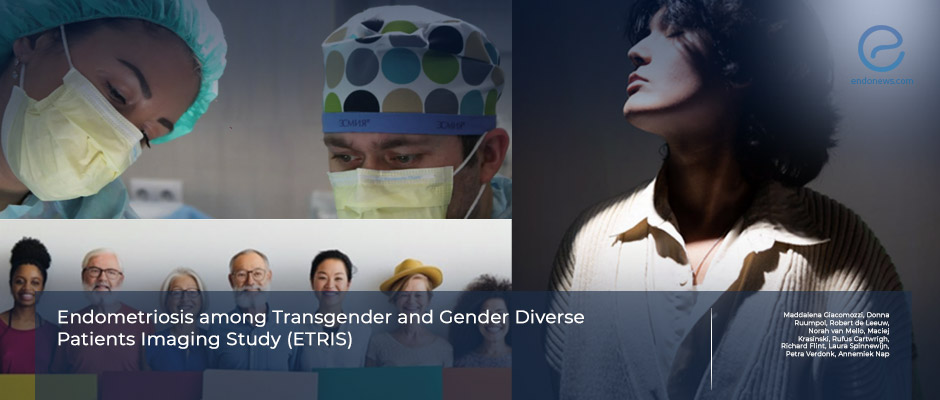Three Percent of Transgender and Gender Diverse Individuals Have Endiometriosis
Oct 2, 2025
The Percentage is Lower than What Was Previously Reported.
Key Points
Highlights:
- Around a third of transgender and gender diverse (TGD) individuals who were assigned female at birth have surgically confirmed endometriosis.
Importance:
- Understanding the prevalence of endometriosis in TGD individuals is crucial for improving gynecologic and gender-affirming care.
- The findings highlight the need for tailored diagnostic pathways, as symptoms and prevalence differ from cisgender women.
- The results also provide early evidence that gender-affirming hormonal care may influence endometriosis expression or detection.
What’s done here:
- This is a retrospective multicenter cohort study of 325 TGD individuals assigned female at birth undergoing laparoscopic pelvic surgery.
- The aim was to estimate the prevalence of surgically confirmed endometriosis in this population.
- Clinical characteristics, including dysmenorrhea, were documented.
Key results:
- A total of 10 transgender and gender diverse individuals (~3%) whon were assigned female at birth undergoing laparoscopic pelvic surgery had surgically confirmed endometriosis.
- 6% of participants reported dysmenorrhea.
- 30% of participants with surgically confirmed endometriosis reported dysmenorrhea,indicating that pain alone was not a strong predictor..
- Findings contrast with cisgender female populations, where endometriosis is detected in 6–10% overall and in up to 50% of symptomatic cases.
Limitations:
- This was a retrospective study, so there may be inconsistencies in reporting, missing data like the race of the participants, changes in electronic patient record systems, and variability in documentation and surgical techniques.
- Also, the small number of confirmed cases (n=10) limits subgroup analysis and generalizability.
From the Editor-in-Chief – EndoNews
"This study represents the first large, multicenter cohort examining the prevalence of surgically confirmed endometriosis in transgender and gender diverse individuals assigned female at birth. The finding that only 3% of patients had endometriosis—significantly lower than rates reported in cisgender women—raises important questions about how gender-affirming hormonal therapy, early menstrual suppression, and care pathways influence both disease expression and detection.
Equally notable is that dysmenorrhea, while present, was not a reliable predictor of endometriosis in this population. This underscores the need for clinicians to recognize that conventional diagnostic cues may not apply uniformly across diverse patient groups. Although limited by retrospective design and small numbers, the study provides a critical foundation for future prospective research.
The key message is clear: endometriosis in TGD individuals is less common than previously assumed, but when present, it requires the same thoughtful, inclusive, and individualized care offered to cisgender women.
Lay Summary
Endometriosis affects 3.1% of transgender and gender diverse individuals, according to a new study published in the Journal of Minimally Invasive Gynecology.
“This finding differs from previous literature as it reports a lower prevalence compared to cisgender women and to other studies on [transgender and gender diverse] people,” the authors if the studyt noted. “This is potentially due to prolonged use of testosterone and early initiation of gender-affirming care”.
To analyze the prevalence of surgically confirmed endometriosis in transgender and gender diverse individuals who were assigned female at birth, a team of researchers led by Annemiek Nap, MD, PhD from the Department of Obstetrics and Gynaecology at Radboud University Medical Center in Nijmegen, Netherlands conducted a retrospective multicenter cohort study in 325 participants, mean age 27.2 between 2021 and 2024 at 3 academic medical centers in the Netherlands and the UK.
Among these, 10 people had endometriosis corresponding to a prevalence of 3.1%.
Testosterone was used before surgery in the vast majority (95.4%) of participanta, and of these, more than a third (38.5%) had been on testosterone for at least five years at the time of surgery.
Overall, 6% of participants reported dysmenorrhea or period pain. Of participants with endometriosis, a third (30%) had dysmenorrhea.
“The [transgender and gender diverse] population has remarkable biological, psychological and social characteristics that make it distinctive from cisgender women with endometriosis,” the researchers noted. “Further research is necessary to investigate the prevalence of symptomatic or clinically relevant endometriosis in this population, to better understand the interaction of [gender affirming care] and endometriosis, and to identify adequate diagnostic and treatment options for [transgender and gender diverse] people from a bio-psycho-social perspective.”
Research Source: https://pubmed.ncbi.nlm.nih.gov/40885532/
gender diverse transgender cisfemale laparoscopic pelvic surgery endometriosis diagnosis dysmenorrhea period pain

